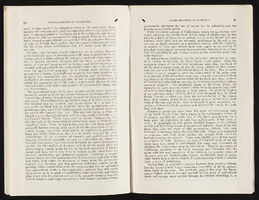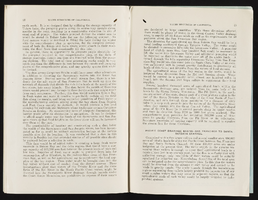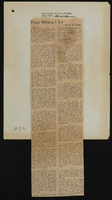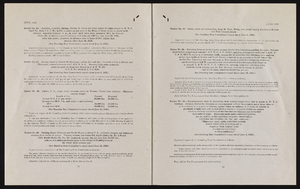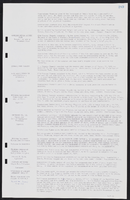Search the Special Collections and Archives Portal
Search Results

The Wheel Las Vegas Rotary Club newsletter, January 22, 1981
Date
1981-01-22
Archival Collection
Description
Newsletter issued by the Las Vegas Rotary Club
Text

Transcript of interview with Charles Nur Fernald by Claytee D. White, May 31, 2014
Date
2014-05-31
Archival Collection
Description
Dancer Charles Nur Fernald first came to Las Vegas in 1963 to perform for five weeks in the Kay Starr Show at the Sahara Hotel and again in 1964 working with Donn Arden for three months at the Desert Inn Hotel. Born in Detroit, Michigan, in 1939, Charles moved several times to various places in Arizona and southern California with his parents, Charles Knox Fernald and Marguerite Marie Higgins Fernald, and half-siblings before settling in Hollywood, California, where he remained (except for his short stints in Las Vegas) from 1961 to 1967. In January 1968 Charles came to Las Vegas to perform with Sid Caesar and Imogene Coca at the Flamingo Hotel. After the show closed Charles auditioned for Donn Arden to dance in the Lido de Paris show at the Stardust Hotel, where he remained for sixteen years, 1968 through 1984. He remains the only male dancer who performed with Lido through five different, consecutive productions. In 1969 Charles met his partner, Aquiles Garcia, who was a dancer at the Dunes Hotel. The couple remain in Las Vegas and have been together forty-five years. Charles’s father was very poor and left school after the third grade to go to work and help support his family. He was born in 1889 in Philadelphia, Pennsylvania, the fifth of eleven children. As an eight-year-old he became a “groundhog,” a digger of New York’s underwater tunnels, who helped build the Holland Tunnel. At fifteen he made more money than his father selling newspapers, fresh fruit, and clothing door to door or from the street corner. According to Charles, his father “drank too much, ate too much, smoked too much, and loved too much.” As an only child, Charles’s mother had a very different upbringing from his father, although her family too was very poor. She was born in Detroit in 1902 to a railroad switchman father and mother who not only scrubbed the floors of wealthy Detroiters but also cooked meals for twenty-one boarders at a rooming house. Marguerite’s parents worked hard so they could send their only child to Catholic school and the Detroit Conservatory of Music.
Text

Transcript of Interview with Merna Dennison by Ken Pyatt, March 1, 1980
Date
1980-03-01
Archival Collection
Description
On March 1, 1980, Ken Pyatt interviewed his grandmother, Merna Dennison (born September 9th, 1917 in Blanding, Utah) in her home in Henderson, Nevada. During the interview, Merna pinpoints Cashman Field as a landmark of Las Vegas. She recalls the Helldorado Parade as one of Nevada’s biggest annual celebrations in which her family attended and participated on numerous occasions. She mentions serving on the Clark County School Board and discusses the growth of the city of Las Vegas, particularly the development and expansion of both McCarran Airport and the Strip.
Text

Transcript of interview with Harvey N. Dondero by Elizabeth N. Patrick, August 9, 1984
Date
1984-08-09
Archival Collection
Description
On August 9, 1984, collector Elizabeth N. Patrick recorded an address by local long time educator, Harvey N. Dondero (born November 12, 1909 in Hawthorne, Nevada) before the Kiwanis Club at the Fremont Hotel in Las Vegas. This address includes Dondero’s observations on the growth of the school system in Las Vegas, Nevada. After the address, Dondero receives a Distinguished Service Award, from the Kiwanis Club of Uptown Las Vegas, as a token of appreciation for his fifty-three years of dedication to children and youth education in Nevada. Dondero also answers questions posed by audience members, regarding the future of Nevada’s education system.
Text
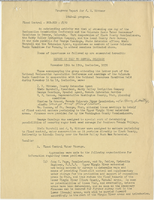
Progress Report for J. H. Wittwer, 1940-41 program
Date
1941
Archival Collection
Description
List of activities and projects worked on by John Wittwer in 1940-41. Report has penciled comments in several places.
Text
Pagination
Refine my results
Content Type
Creator or Contributor
Subject
Archival Collection
Digital Project
Resource Type
Year
Material Type
Place
Language
Records Classification

